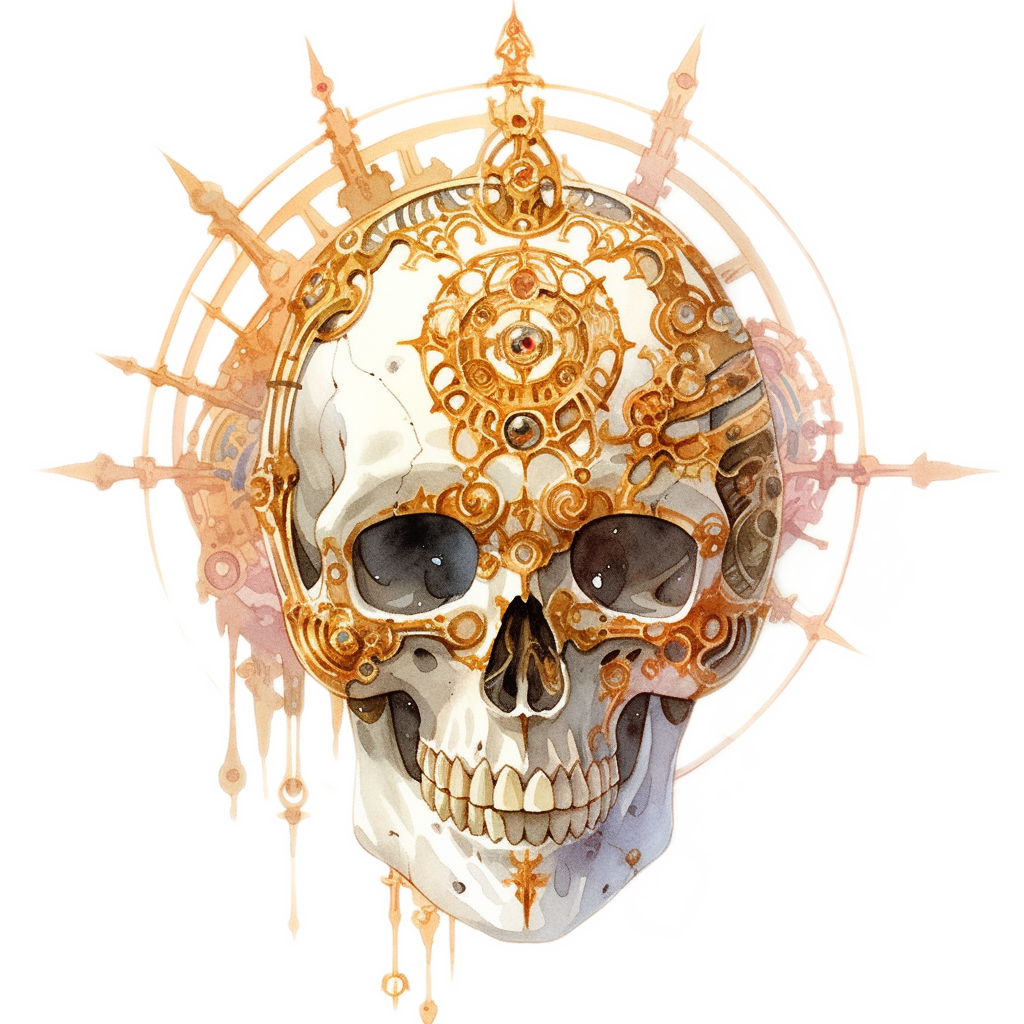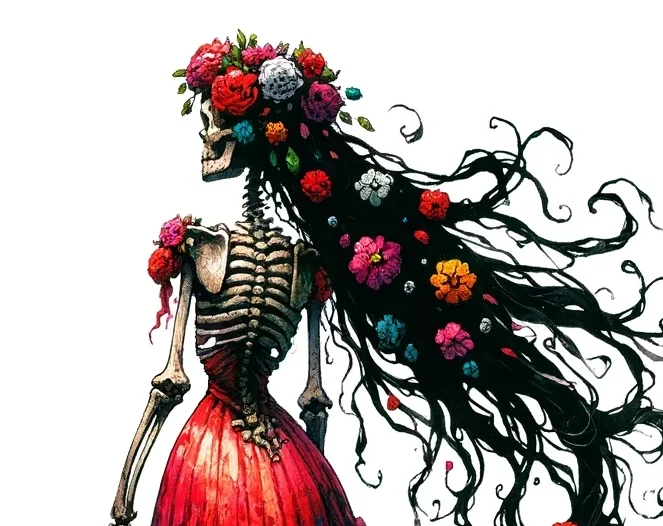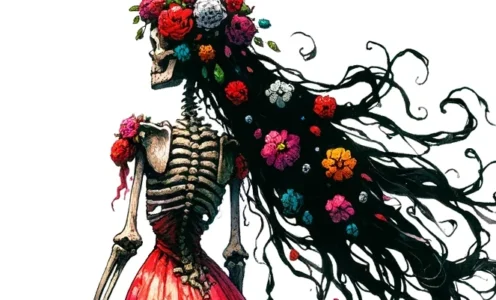The Roles in Psychopomp Society
Psychopomps are divided into a strict caste system; the role the basher plays in their society is reflected directly in their physical form and abilities. The lowest and most numerous of the castes are the the raven-like nosoi, who can be encountered across the Underlands and beyond. The chant goes that they’re formed from petitioners who show particular promise, and are selected by the yamaraj from all the souls who pass through the Underlands. Psychopomps who perform particularly well in their role may find themselves promoted to higher castes, although there’s no particular pathway to follow.
This is an overview of the many varied castes of psychopomps, their appearance and abilities, and the role they’re prescribed keeping the afterlife running smoothly.
See also
Nosoi
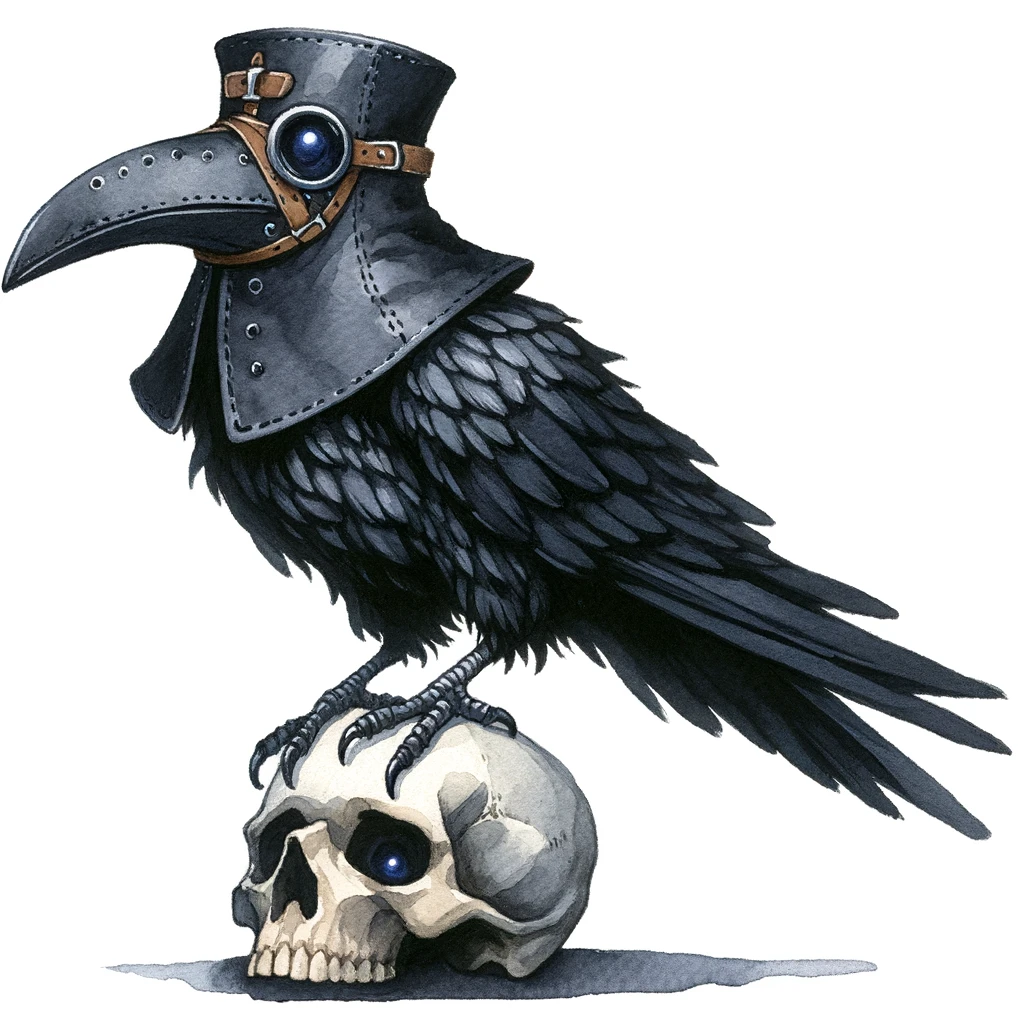
Scribes, gossips and guardians
These bashers are more than just common birds of the Boneyard. Clad in somber hues with their faces hidden behind plague masks, these foot-long, feathered scribes keep the records of the dead, mixing their duty with an insatiable penchant for gossip. Often found perched in graveyards masquerading as mortal birds with enigmatic charm, the nosoi are also guardians against the undead. They’re known for their social chattering, a love for snacks, and can be quite the mischievous companions for spellcasters. With their blend of scribe, gossip, and guardian roles, the nosoi embody the whimsy that can be found even amidst the somber business of shepherding souls. More chant…
Esobok
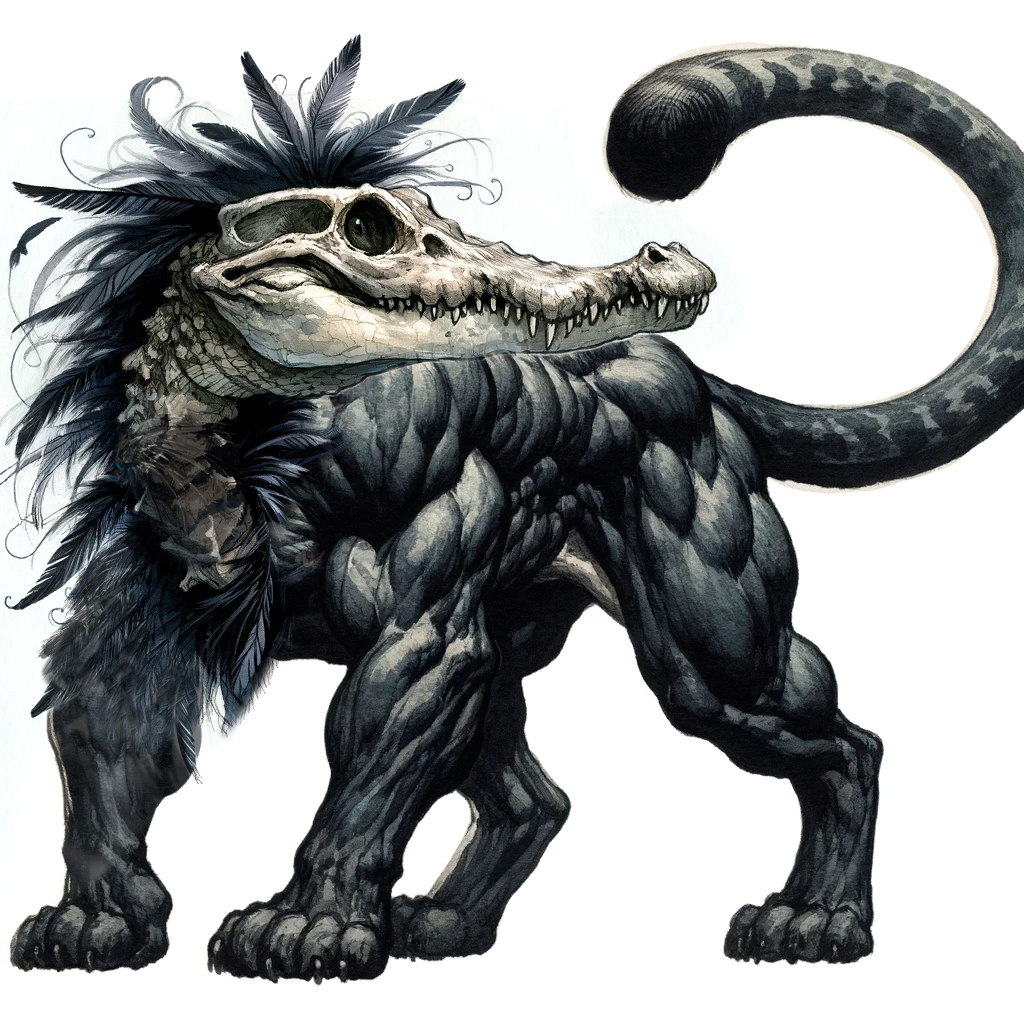
Ferocious muscular guards
These bashers are the brawny enforcers of the psychopomp world, standing out not for soul shepherding but for keeping the peace in their own fierce way. These creatures act as the border guards and undead hunters of the afterlife, driven more by a relentless passion for the hunt than a need for sustenance. Lacking the subtlety of their psychopomp kin, esobok patrol the Underlands’ fringes, ferociously guarding against intruders and necromancers. Esobok symbolise the essence of duty in the afterlife’s order, embodying a brute force that contrasts sharply with the more intellectual psychopomps, emphasising the need for a balance of raw power alongside cunning in maintaining the cosmic order. More chant…
Ahmuuth
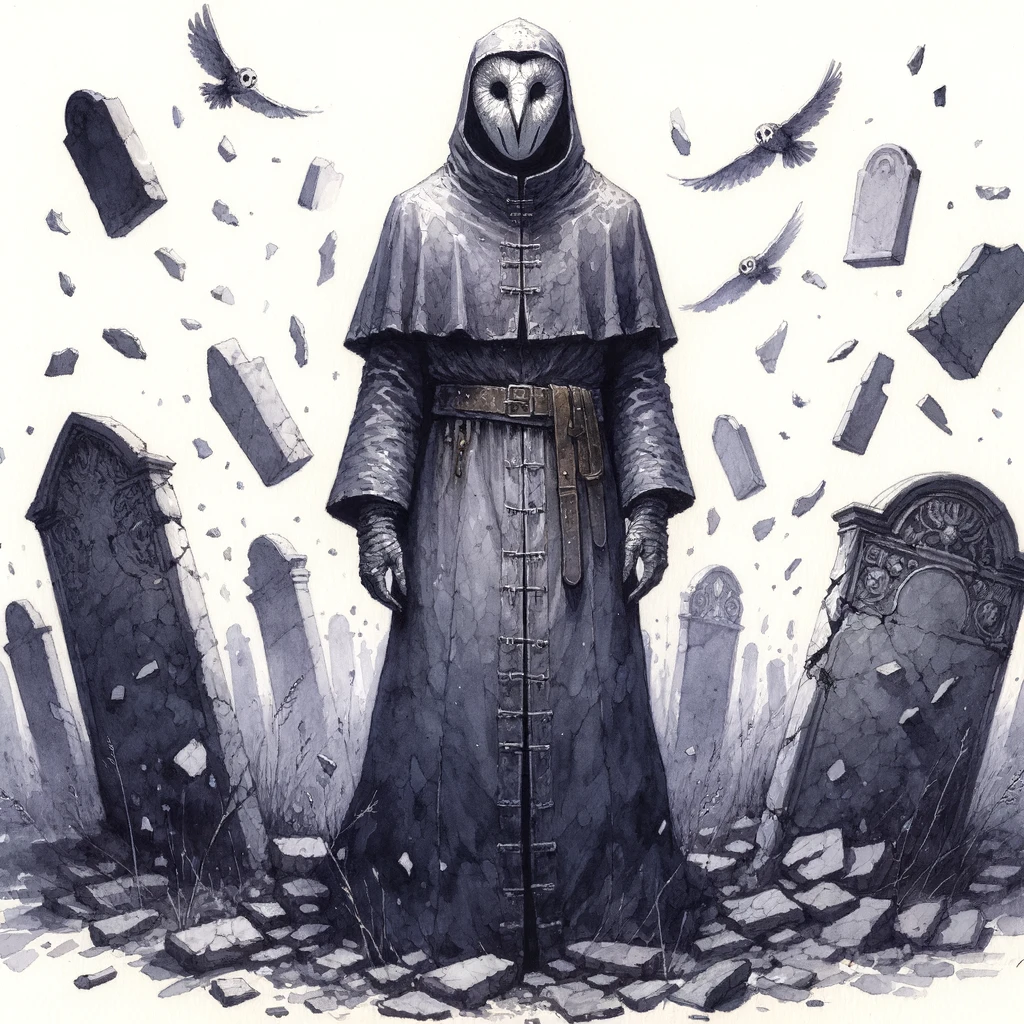
Guides of restless spirits
The ahmuuth are solemn guardians of the afterlife. More than mere hunters of the undead, they act as conduits between the living and the dead, guiding restless spirits to face Pharasma’s judgment. While engaging with the mortal world, ahmuuth are unyielding in their mission, embodying the inevitability of death and the finality of fate. They appear draped in mourning attire and masked like owls, accompanied by shards of gravestones which float around them silently in a chilling spectacle. They symbolise the quiet, inevitable march of death and the permanence of the final resting place as they ensure every spirit meets its deserved fate. More chant…
Viduus
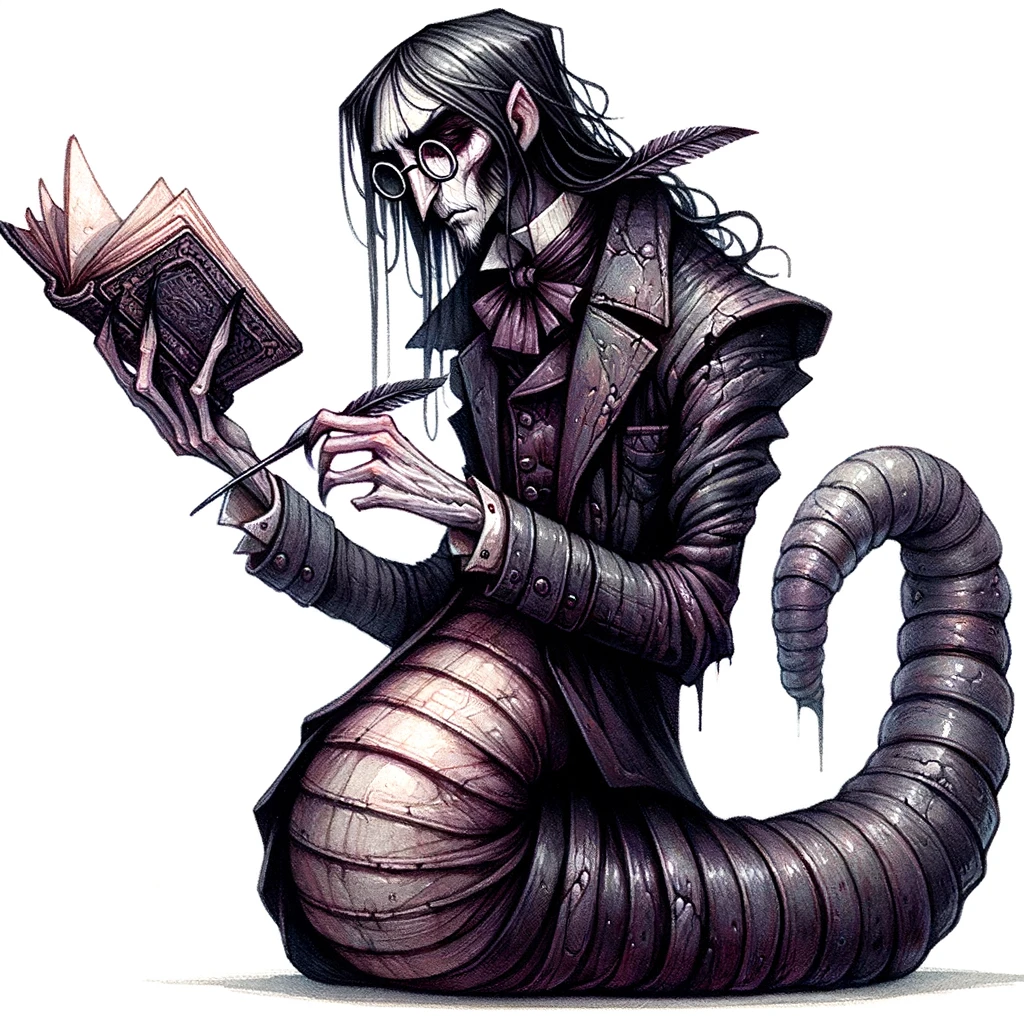
Archivists of memories
The viduus is a unique blend of scholar and memory-keeper; part humanoid and part something else enshrouded in a mysterious cocoon. As guardians of secrets and archivists in the libraries of the Underlands, they wield magical quills that can extract and transcribe a cutter’s memories directly from their brain-box and into a tome, or in the case of the undead, obliterate their memories entirely. Known for cataloging the extraordinary lives and secrets of remarkable souls, viduus are living compendia of arcane knowledge and forgotten lore, embodying the value of knowledge and its preservation in the endless chronicles of the multiverse. More chant…
Catrina
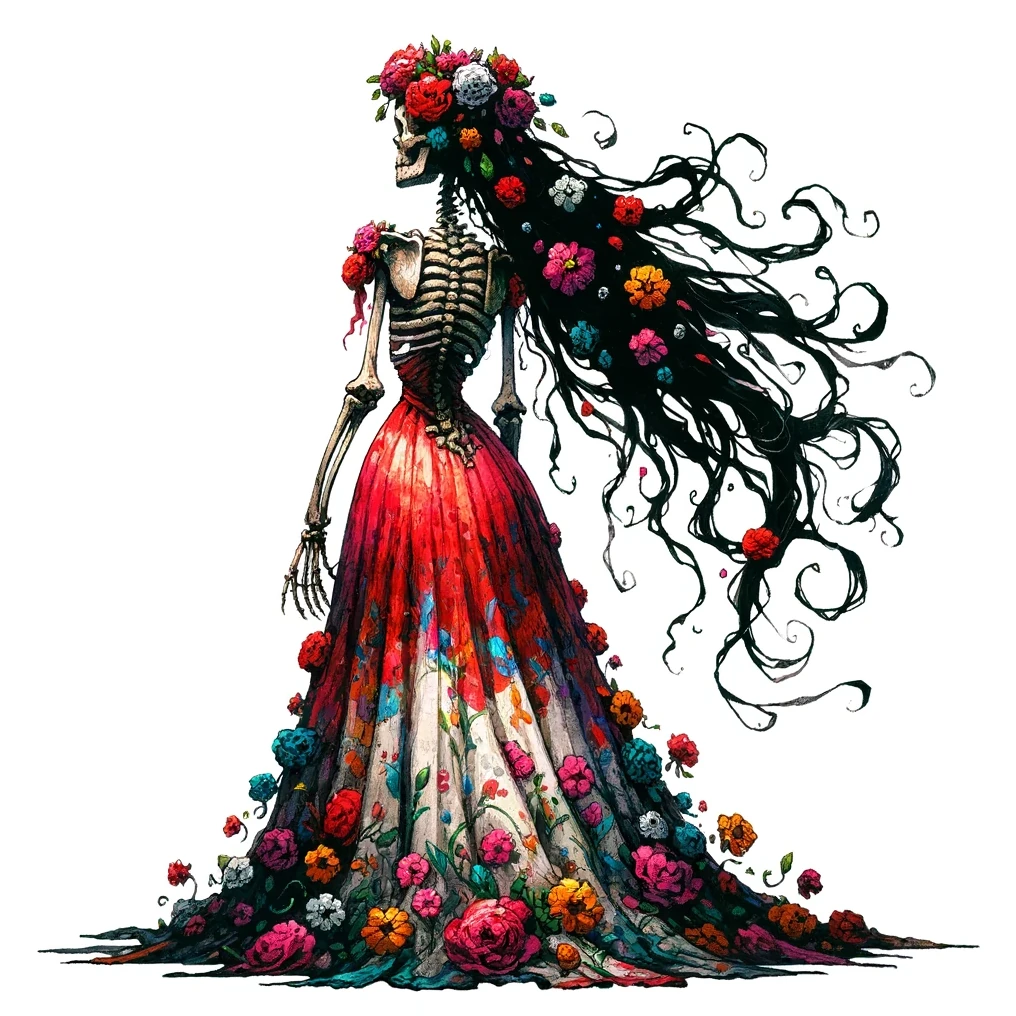
Gentle ushers of souls
The catrina is a figure of both beauty and solemnity in death. These skeletal beings, garbed in a dancer’s attire and adorned with flowing hair and vibrant flowers, embody a paradox of mortality and elegance, offering compassion and solace in the afterlife. As gentle ushers of souls, catrina ease the transition of the newly departed upon their arrival in the Underlands, softening the shock of death. Their role is practical as well as compassionate, because ensuring a calm passage of souls will make for more efficient processing in the afterlife’s bureaucracy. While they seldom visit the Prime, a catrina may occasionally guide and accompany important figures, such as the priests of death powers. They embody the acceptance and the finality of death. More chant…
Mari Lwyd

Guardians of solstice and equinox
In the places where the boundary between life and death is hauntingly thin dwells the mari lwyd, a peculiar yet oddly familiar creature. Resembling a skeletal quadrupedal draped in a white shroud, its horse skull head adorned with ribbons and bells, it symbolises both mirth and mortality. Unlike other psychopomps, the mari lwyd revels in the seasonal cycle, especially in the cold of winter, overseeing the death of the summer while offering friendship and aid to the living. Fond of feasting this gentle spirit can become fierce if provoked, using its haunting song in battle to incapacitate foes with laughter. Valued by other psychopomps but fiercely independent of the hierarchy of the race, the mari lwyd embodies the paradoxical coexistence of death and cheer, highlighting the continuity of life and the unexpected joys found even in the bleakest times. More chant…
Morbai
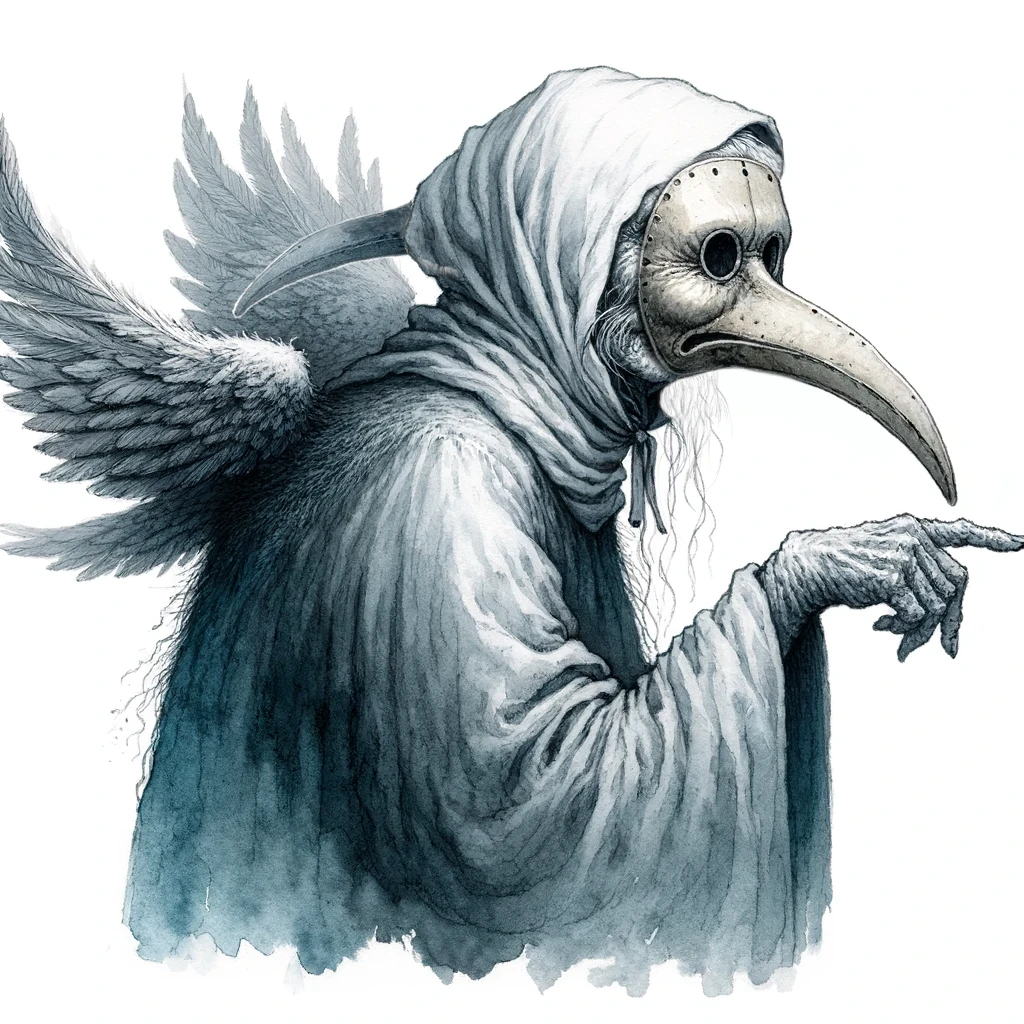
Spread and cure diseases
Morbai, no taller than a halfling and cloaked like figures from fairytales, embody the fragile balance of life. These creatures shift their form to reflect the race of those who behold them, and sport two plague masks, front and back, symbolising their dual nature as both healers and harbingers. In a deadly dance of healing and harming, morbai guard against epidemics, while at the same time crafting new diseases as reminders of life’s transience. Preferring to work behind the scenes, morbai manipulate mortal medics, testing their resolve. Morbai serve as the unseen, ever-watchful guardians at the crossroads of life and death, epitomising the intricate and merciless cycle. More chant…
Vanth
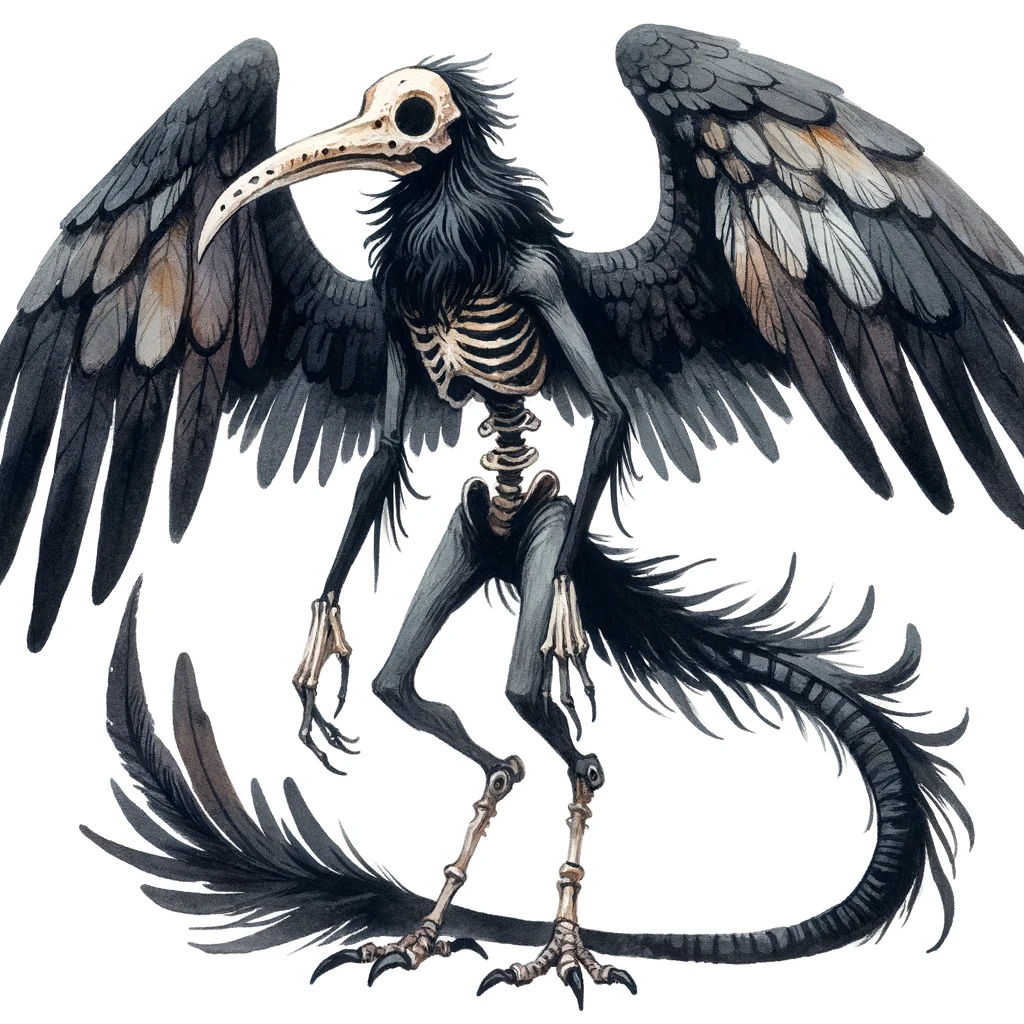
Guardians of spirits
The vanth are solemn sentinels of Purgatory and guardians of the River of Souls. These imposing skeletal figures with dark, ragged wings, vigilantly watch over the spirits of the dead, protecting them from threats in forgotten cemeteries and sacred groves, as well as on the River itself. Ancient and stoic, vanths speak rarely, but with voices echoing the finality of death. Their scythes, more than mere weapons, are symbols of their sacred duty that represent the unrelenting march of mortality. Disdainful of emotions and indifferent to societal laws, vanth are unyielding in their duty, and often perceived by mortals as grim reapers—a notion they tend to find either ignorant or offensive. They are nonetheless formidable frontline soldiers in the battle to maintain the cycle of life and death. More chant…
Calaca
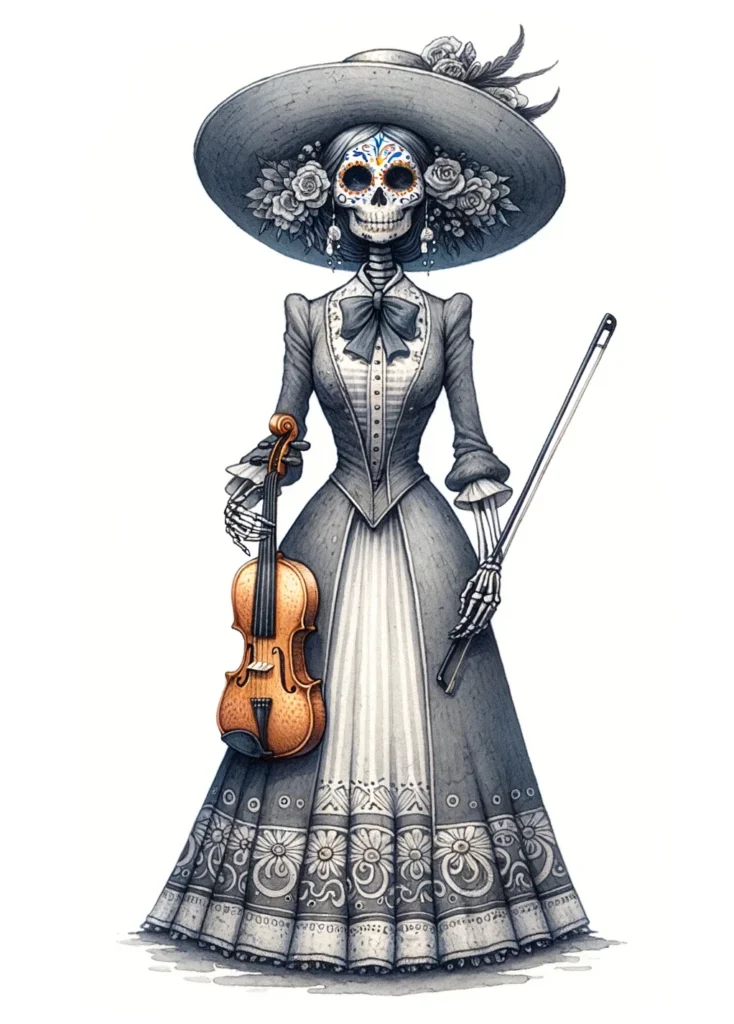
Comfort the bereaved
The calaca are enigmatic and compassionate psychopomps, appearing as skeletal yet elegantly clothed figures who conceal their faces behind an ornate skull masks. The calaca focus not on guiding the dead, but on comforting those left behind. They use music and song to celebrate life, but their real unspoken purpose is to deter the living from necromancy. These beings, blending into mortal society, offer wisdom and catharsis through their empathy and social grace. Despite their spectral nature, calaca possess a profound sympathy for the survivors of the deceased, expressing their understanding of grief through joyful music and laughter. Bearing mysterious antique weapons and musical instruments, calaca gently steer the grieving towards accepting death as a natural transition, often targeting the rich and influential to prevent them from pursuing dark magic or attempting to rasie or resurrect. In times of tragedy, they form troupes, performing elaborate musical feasts, to remind all of the continuous natural cycle of life and death. More chant…
Ember Weaver
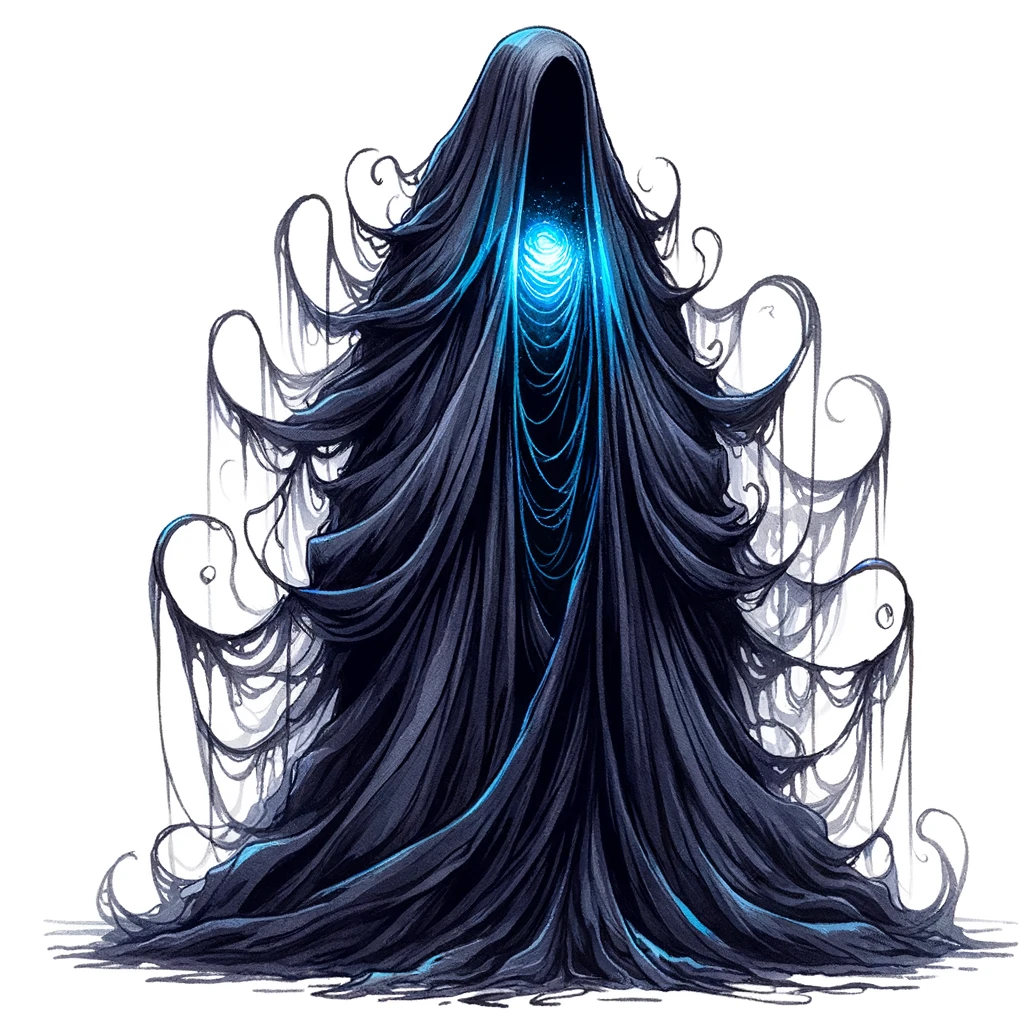
Beacons for lost souls
In the shadowy realms where life and death intertwine, the ember weaver is an ethereal, mesmerising and daunting presence. Shrouded in gossamer layers, these slender, luminous beings serve as guiding beacons for lost souls, leading them toward the afterlife. Often found in graveyards and near leylines, ember weavers trade their guidance for whispered stories of misplaced souls for them to seek. They’re more than mere guides though; they lead hunts against spirits tainted by undeath, aiding psychopomps like ahmuuth and esobok in their sacred duties. The ember weaver symbolises the relentless pull of fate and serves as a guiding light for those adrift between worlds. More chant…
Shoki
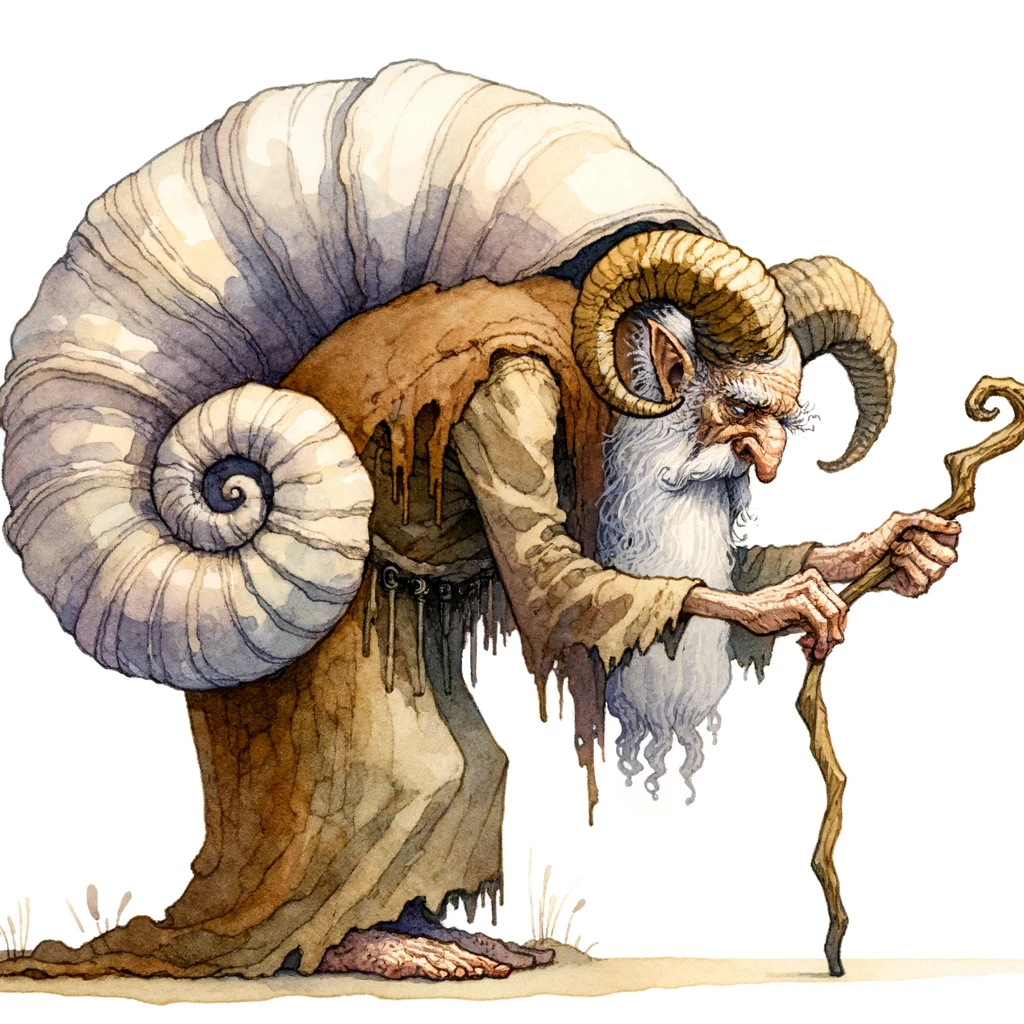
Catchers of lingering spirits
The shoki are formidable psychopomps burdened with the duty of guiding stubborn souls to the afterlife. Hunched and carrying gnarled staves and bearing ram horns and massive snail shells on their backs, these psychopomps are the relentless collectors of lingering spirits. Shoki are not just enforcers; they are thinkers and debaters, employing theological arguments and blunt truths to persuade wayward souls. They are equipped with a collection of holy symbols, but the last resort in guiding the dead to judgment is the shokti’s staff. This is a powerful tool for capturing incorporeal undead, and the chant goes that once trapped, souls can only be released by the shoki’s will. Emblematic of the finality of fate, shokis are somber, unyielding guardians of the cycle of life and death. More chant…
Kere

Defender of resting places
The somber kere are ghostly sentinels, slender and cloaked in mournful attire, their faces veiled in black as they watch over graveyards. Unlike other psychopomps, keres guard the final resting places of bodies rather than ferrying souls themselves. Their aim is to deter necromancers, grave robbers, and others who seeking the remains of the dead for nefarious purposes. They kere create an atmosphere of dread with subtle, eerie illusions to deter trespassers on sacred ground. These vigilant spirits, strongest in their presence at night, communicate through haunting displays rather than words, responding to intruders with fear-inducing manifestations or direct confrontations. Each kere is tethered to a specific gravestone, becoming visible and powerless if strayed too far from it, symbolising their deep connection to the memorials they protect. More chant…
Algea
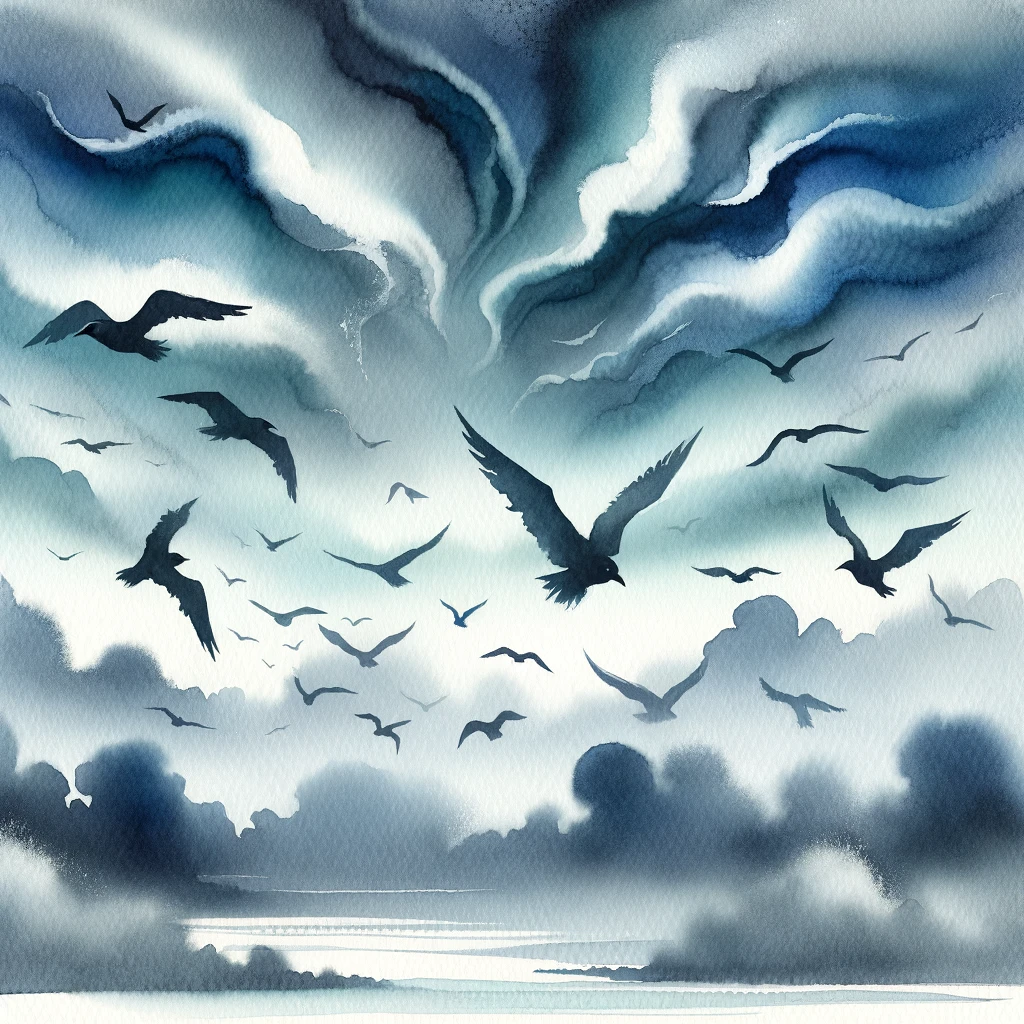
Safeguard souls from outsiders
The algea are part creature, part phenomenon of the River of Souls. They appear as a swirling vortex of whip-poor-wills trailing pale blue mist, calling out eerie cries in unison. Their purpose is singular: to safeguard souls on the brink of ensnarement by malevolent entities like the Great Old Ones, liches, fiends, and false prophets. Algea exude a deep, tangible aura of grief, a poignant reminder of life’s fragility. Beyond their empathic nature, they possess the ability to drain magic, and entrap souls within their swirling dance, offering a protective custody to prevent souls from succumbing to darker fates—or from escaping. The algea symbolise the equilibrium between the mortal world and the afterlife, serving as guardians against the sinister forces lurking beyond the veil. More chant…
Morrigna
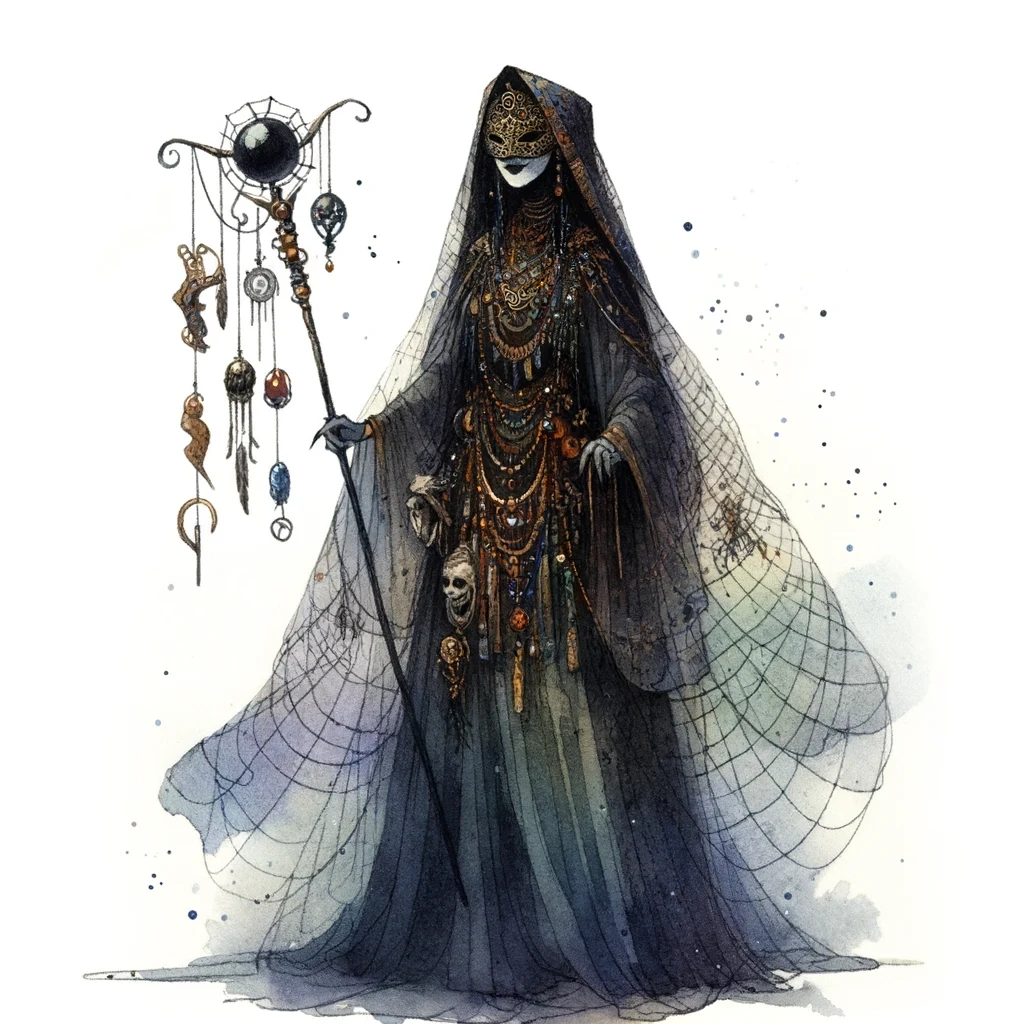
Investigators, bounty hunters and assassins
The morrigna are figures of morbid beauty and formidable power, masked and draped in spider silk. These towering beings serve as investigators, bounty hunters, and assassins in the Underlands, ensuring the uninterrupted flow of the cycle of death and judgment. Morrigna act to uncover hidden truths and defend death’s domain. They hunt soul traffickers and beings manipulating souls across all realms, from the Hells to Mount Celestia. In their role, they seek empirical truths to inform impartial judgments and target those defying death’s natural order. Morrigna symbolise patience, strategy, and inevitability, ensuring each soul finds its rightful place in the grand cycle of existence. More chant…
Memitim
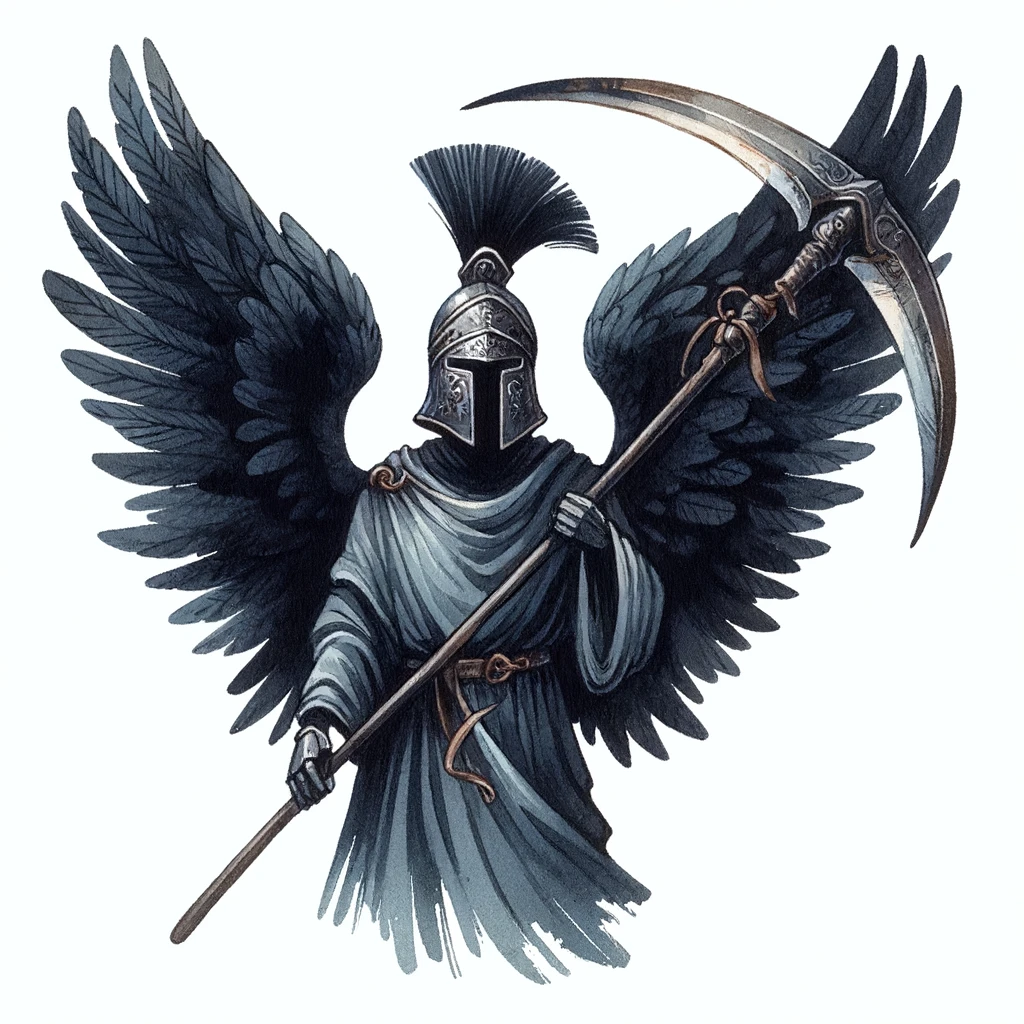
Angels of death
Soaring over the battlefields of the planes, where life and death are indistinguishably intertwined, the memitim are towering, black-winged angels of death. Peering from beneath their legionnaire’s helmets with onyx-like gazes, they serve not as ferrymen of souls, but as vigilant guardians against malevolent entities preying on the departed. Memitim protect the fallen from daemons, night hags, and the undead, striking with righteous fury to ensure the safe passage of souls. Their presence is both a bulwark against the disruption of life’s final journey and a stark reminder of death’s inevitability. More chant…
Eseneth
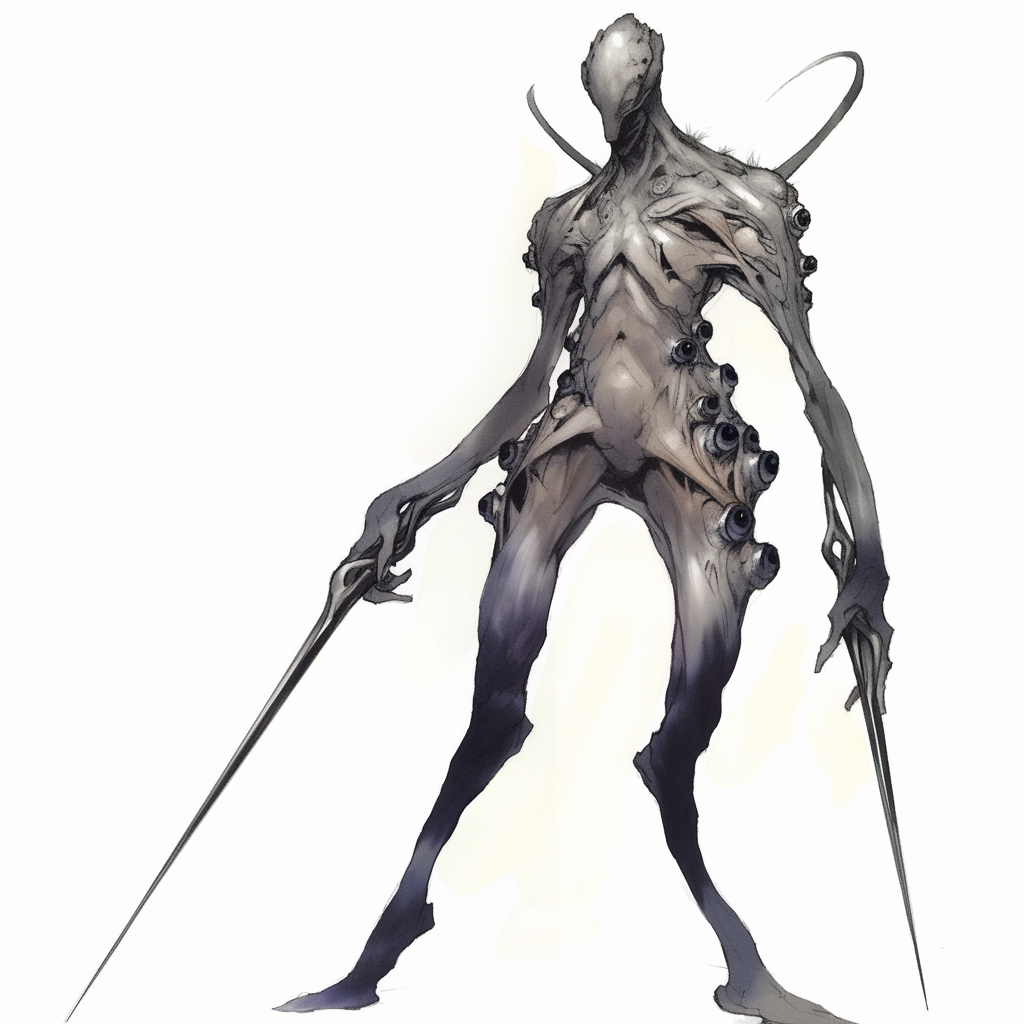
Stitchers of souls
Working quietly and quickly, the stitchers of souls are charged with mending the souls that arrive damaged after their long journey through the River of Souls. Souls which have arrived broken—assuming they survive the journey, aren’t picked off by predatory daemons, or devoured by overzealous esobok—are identified and rounded up by the gentle catrina, and then brought to the eseneth. These beings are mysterious and terrifying, looking like they are already halfway to becoming sahkil. Wielding their needle-arms like master tailors, the eseneth snip and stitch, excising the necrotic to cleanse the spirit, sewing up the damage with silver astral thread. The best eseneth needleworkers can mend a soul so you’d never know they were once undead, sew back on a missing head, or cut out memories which prevent a soul from passing on. More chant…
Olethros
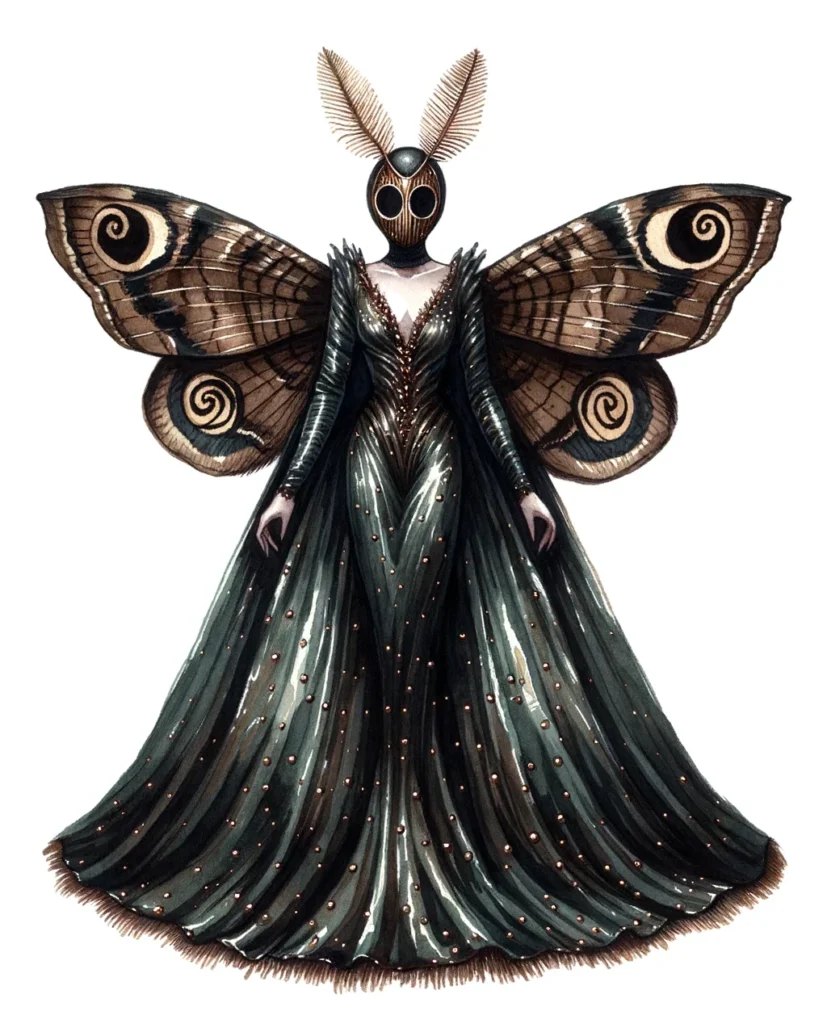
Influencers of Fate
The olethros is a moth-winged woman shrouded in a silken gown covered with bronze mirrors, her face concealed by an insect mask. Olethros symbolise mastery over the interplay of birth, death, and fate as the blend among mortals, subtly guiding fate disguised as wise midwives or mentors. Focusing on the entirety of mortal lives, they promote specific visions of fate, and often clash with entities like norns and lipika aeons over destiny’s manipulation. Each olethros specialises in a particular realm of birth, fate, or death. More chant…
Fulgati
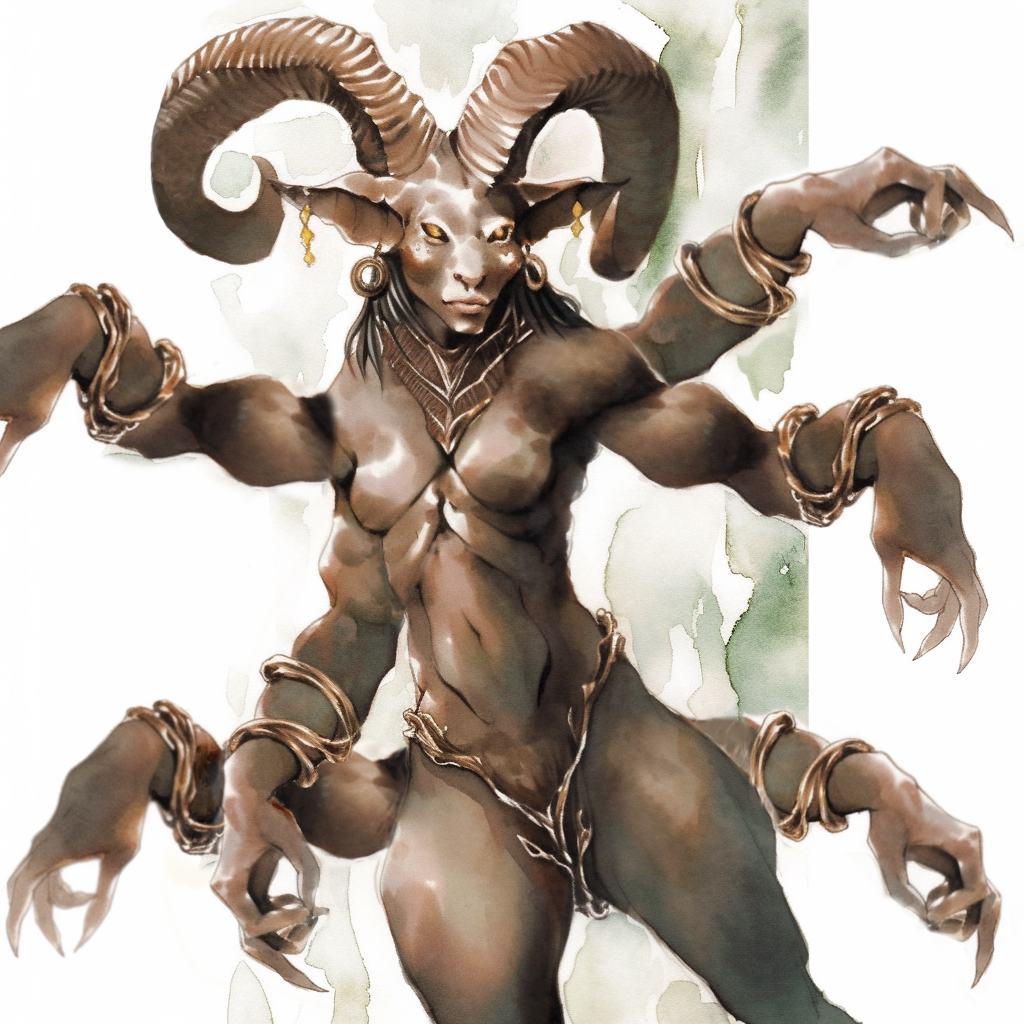
Destroyers of civilisations
The fulgati are colossal, muscular entities, towering at 80 feet tall and resembling massive female minotaurs carved from metal and stone with eight stout arms, their very movements causing seismic tremors. They herald the end of entire civilisations, emerging when a culture or species faces its twilight to make way for new growth. Their presence, often erased from mortal memory and attributed to natural disasters, remains shrouded in mystery and legend. Utterly lacking compassion, they harvest life’s essence itself to animate minions that aid in destruction. These creations may persist for centuries, ensuring no trace of the civilisation remains. Fulgati symbolise the impermanence of cultures and the relentless march of time, executing the natural order’s end with irrevocable finality. More chant…
Yamaraj
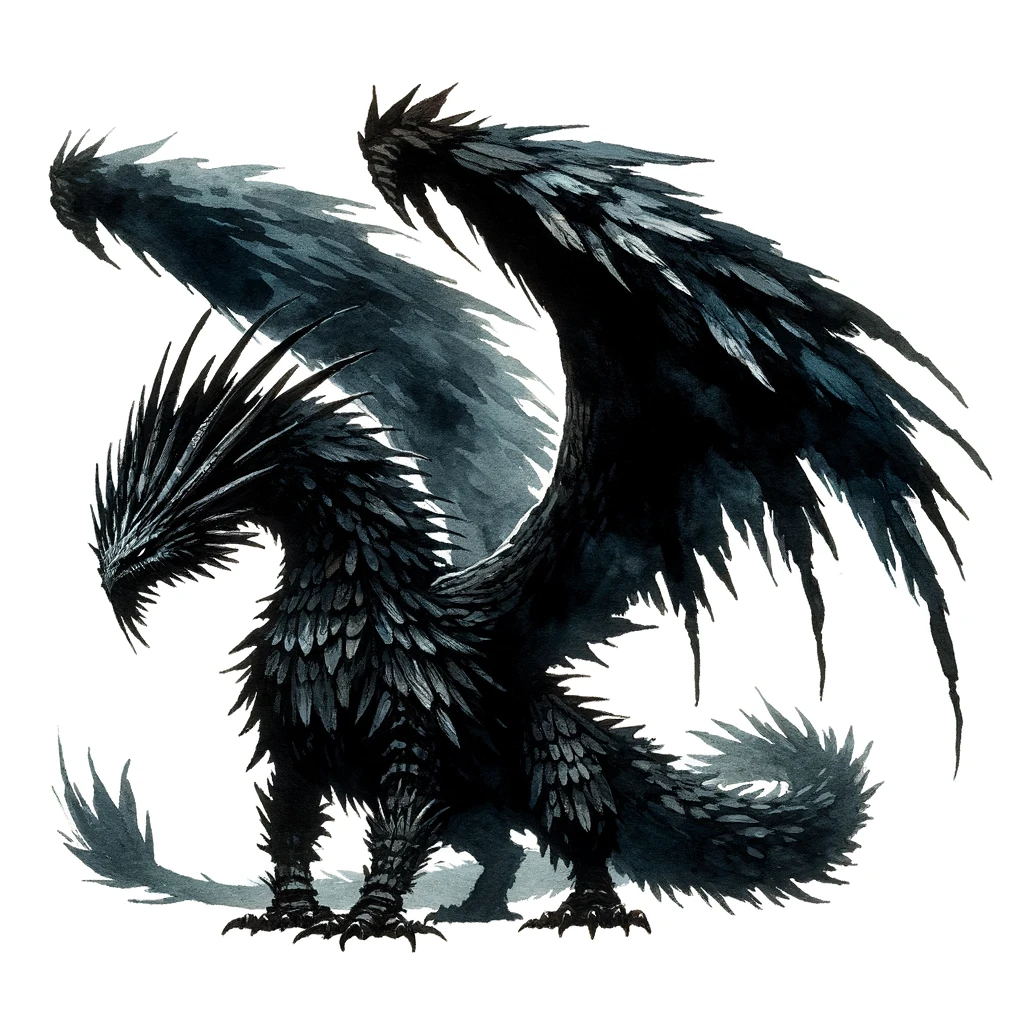
Judges of the dead
In the Underlands’ heart, the yamaraj reign as immense, awe-inspiring figures, resembling dragons cloaked in black crow feathers. As judges and ultimate dispensers of justice in the realms of death, they command both fear and reverence. These grave magistrates hold sway over lesser psychopomps and the endless procession of souls, balancing their roles as judges, diplomats, and military commanders to maintain the multiverse’s soul flow and balance. Autonomous within their courtrooms, yamaraj are ancient beings, with unique personalities and interests, which influences their judgments and interactions with souls. Yamaraj symbolise the ultimate authority in the cosmic cycle of life and death, their unpredictable nature integral to the intricate dance of fate and mortality. More chant…
Source: Jon Winter-Holt, mimir.net
